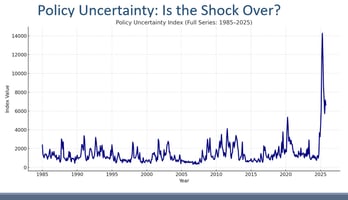The Federal Reserve cuts the benchmark rate by 50 basis points marking the first cut in over four...
NEWSLETTER VOL 4 | AUGUST 2024
From Bull to Bear to…?
The markets saw a dramatic shift over the past few weeks, transitioning from reaching an all-time high on July 16th, with the year-to-date gains standing at an impressive 20%, to a sharp sell-off that left investors worried about the potential for a recession, and back to near record highs. Let's break down the timeline of events that led to this rollercoaster ride in the markets.
The Rally to New Highs
The market's ascent to record levels was fueled by a wave of positive news. Inflation continued to ease, with CPI rising by 3.0% year-over-year in June, down from 3.3% in May. Core CPI also showed a slight improvement, increasing by 3.3% compared to May's 3.4%. The retail sales report for June highlighted robust discretionary spending, which has been a significant driver of overall economic growth. This contributed to a strong GDP growth rate of 2.8% in Q2. Additionally, Fed Chair Jerome Powell's congressional testimony was notably dovish, as he acknowledged the slowing inflation, raising hopes that the Federal Reserve might cut rates while the economy continued to demonstrate resilience despite some rebalancing in the labor market.
From Bull to Bear
However, the market narrative shifted rapidly as several factors came into play. Investors began rotating out of the mega-cap stocks after an impressive run-up. The problem was that too many investors were heavily invested in the Nasdaq 100, which is concentrated in mega caps, while many hedge funds were also shorting small caps. This rotation caused significant volatility. A batch of weaker-than-expected economic reports added to concerns, particularly the July labor report, which revealed a significant slowdown in job growth. The economy added only 114,000 jobs, far below the expected 170,000, and the unemployment rate jumped to 4.3% from 4.1%.
These disappointing figures, combined with a series of lackluster data such as one-year highs in weekly jobless claims and sharp declines in global manufacturing, began to change the market narrative. The focus shifted from the Fed having leeway to cutting rates as inflation ebbs to it being forced to cut rates to stave off a weakening economy. The Bank of Japan's decision to raise interest rates and signal further increases led to a sharp rally in the yen. This, coupled with the narrowing spread between U.S. and Japanese rates, made the dollar less attractive, further exacerbating market fears as the dollar/yen carry trade unwound. These factors conspired to paint a picture of a potential U.S. recession, leading to a sharp market sell-off.
A Rally from Correction Lows
Just as investors began to lose hope, markets found footing. The Bank of Japan signaled it would hold off on raising rates during market instability. The US ISM Non-Manufacturing Index rebounded sharply, initial jobless claims dropped more than expected, and July Retail Sales far surpassed expectations, once again assuaging recession fears. Furthermore, a continued drop in the CPI to 3.2% in July keeps Fed rate cuts on the table. The S&P 500 clawed back nearly all its losses.
Looking Ahead
As we assess the dynamic nature of the economy and markets, our focus remains on being proactive, though this often involves reacting to shifts in data and financial indicators. We have a strong track record of identifying whether market weakness is merely a pullback from recent highs or indicative of a more serious erosion in economic fundamentals. Currently, we believe that risks are elevated and have anticipated bouts of volatility, as noted in previous updates. However, we do not view the recent soft data as signaling an inflection point in economic growth. We have recently taken steps to trim risks in the portfolios but are not shifting to a defensive stance and remain relatively constructive on the markets.


